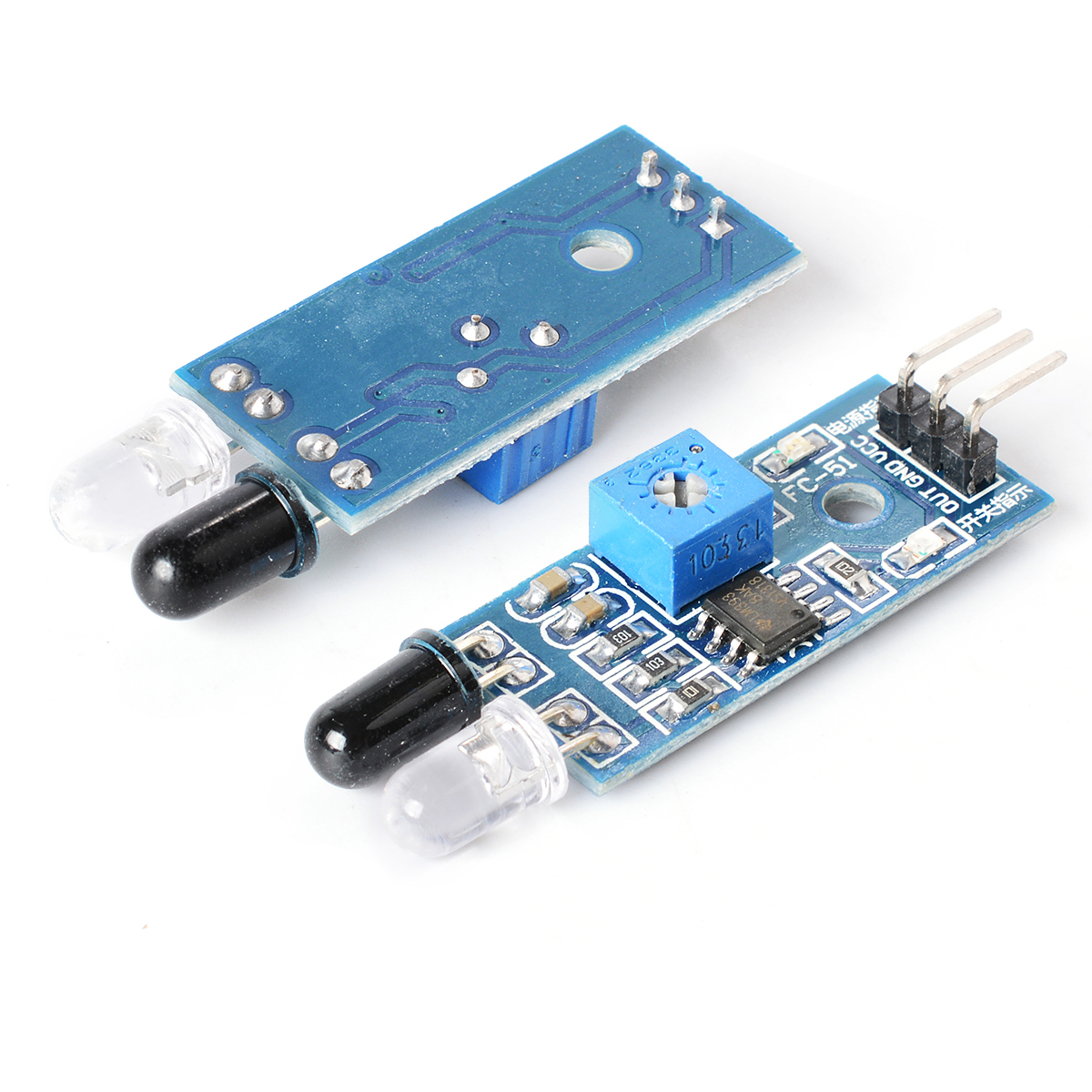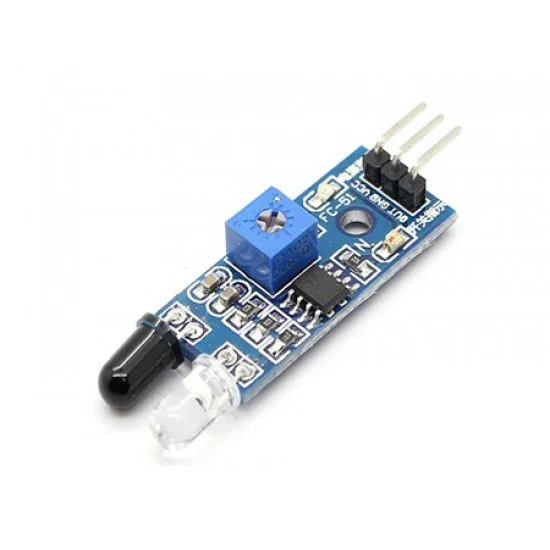IR Infrared sensor Two way Obstacle Sensor
An infrared obstacle avoidance sensor is a device that uses infrared light to detect objects in its path. IR Avoidance Sensor consists of a transmitter and a receiver, both of which emit and receive infrared light. When an object comes between the transmitter and receiver, some of the infrared light is reflected back to the receiver. The amount of reflected light is used to determine the distance of the object from the sensor.
Infrared obstacle avoidance sensor commonly use in robotics and other applications where it is necessary to detect objects in the environment. They are relatively inexpensive and easy to use, making them a popular choice for many applications.
The effective distance range of an infrared obstacle avoidance sensor is typically between 2cm and 80cm. The on-board preset allows you to adjust this range so that the sensor can detect objects within a specific distance.
The on-board preset is a valuable feature that allows you to fine-tune the performance of the sensor to your specific application. many infrared obstacle avoidance sensors have an on-board preset that allows you to adjust the detection range of the sensor. This is useful for fine-tuning the sensor to your specific application. The preset is typically a small knob or potentiometer that you can turn to increase or decrease the detection range.
The input voltage of an infrared obstacle avoidance sensor is typically 3.3V to 5V DC. This means that the sensor can power by a 3.3V or 5V power supply. Some sensors may have a wider input voltage range, but 3.3V to 5V is the most common.
Working Principles
An infrared obstacle avoidance sensor works by emitting an infrared beam and detecting the reflected light. The sensor consists of two main components: an infrared transmitter and an infrared receiver. The transmitter emits a beam of infrared light, and the receiver detects any reflected light.
When an object comes between the transmitter and receiver, some of the infrared light reflect back to the receiver. The amount of reflected light used to determine the distance of the object from the sensor. If the object is close, the amount of reflected light will be high. If the object is far away, the amount of reflected light will be low.
Here are the steps on how an infrared obstacle avoidance sensor works:
- Infrared transmitter emits a beam of infrared light.
- Infrared receiver detects any reflected light.
- The amount of reflected light use to determine the distance of the object from the sensor.
- The sensor’s output is typically a voltage or current signal that is proportional to the distance of the object from the sensor.
- This signal can use to control a motor or other device to avoid the object.
Infrared Obstacle Avoidance Sensor Module Features : –
An infrared obstacle avoidance sensor works by emitting an infrared beam and detecting the reflected light. The sensor consists of two main components: an infrared transmitter and an infrared receiver. The transmitter emits a beam of infrared light, and the receiver detects any reflected light.
Infrared obstacle avoidance sensors have a number of benefits, including:
- Reliable and accurate: Infrared obstacle avoidance sensors are a reliable and accurate way to detect objects in the environment. They are not affected by ambient light, making them a good choice for applications where there is a lot of light.
- Inexpensive: Infrared obstacle avoidance sensors are relatively inexpensive, making them a cost-effective solution for many applications.
- Easy to use: Infrared obstacle avoidance sensors are easy to use and can be integrated into a variety of applications.
- Durable: Infrared obstacle avoidance sensors are durable and can withstand harsh environments.
Infrared Obstacle Avoidance Sensor Module Specifications : –
When an object comes between the transmitter and receiver, some of the infrared light reflect back to the receiver. The amount of reflected light use to determine the distance of the object from the sensor. If the object is close, the amount of reflected light will be high. If the object is far away, the amount of reflected light will be low.
The sensor’s output is typically a voltage or current signal that is proportional to the distance of the object from the sensor. This signal can use to control a motor or other device to avoid the object.
Infrared obstacle avoidance sensors come in a variety of specifications, but some of the most common include:
- Main IC: LM393
- Detection Distance: 2~30cm
- Detection Angle: 35 °
- Working Voltage: 3.3V~5V
Package : –
1 x Infrared Obstacle Avoidance Sensor Module














Reviews
There are no reviews yet.